
Dynamics Toolbox
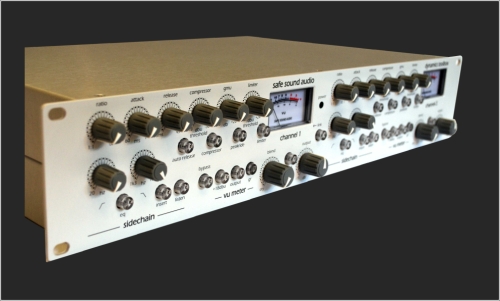
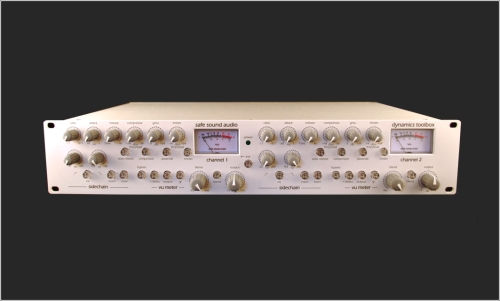
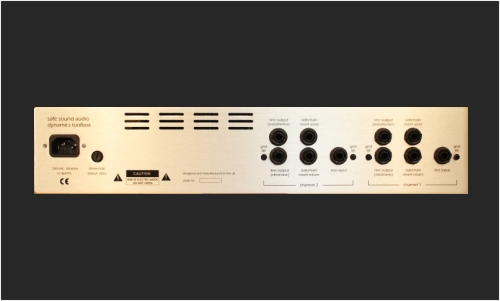
A fantastically flexible dual channel/stereo linkable compressor with a choice of compressor sidechains for tracking, mixdown and mastering. Built in 'New York' style parallel compression for thickening up stereo subs, especially drums or guitars. Full sweepable side chain filtering on board plus balanced sidechain insert points. Illuminated VU meters. A truly flexible compressor for studio or live use.
Use it in peakride mode when tracking vocals or anything else which needs the best tracking compressor available. Switch to dynamics tracking for mixdown and mastering.
Check out the great features below.

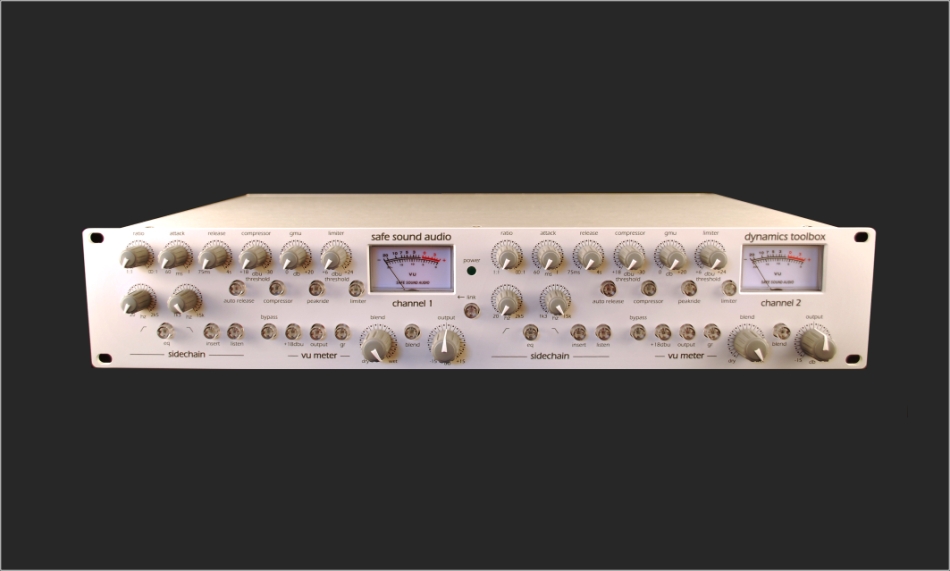
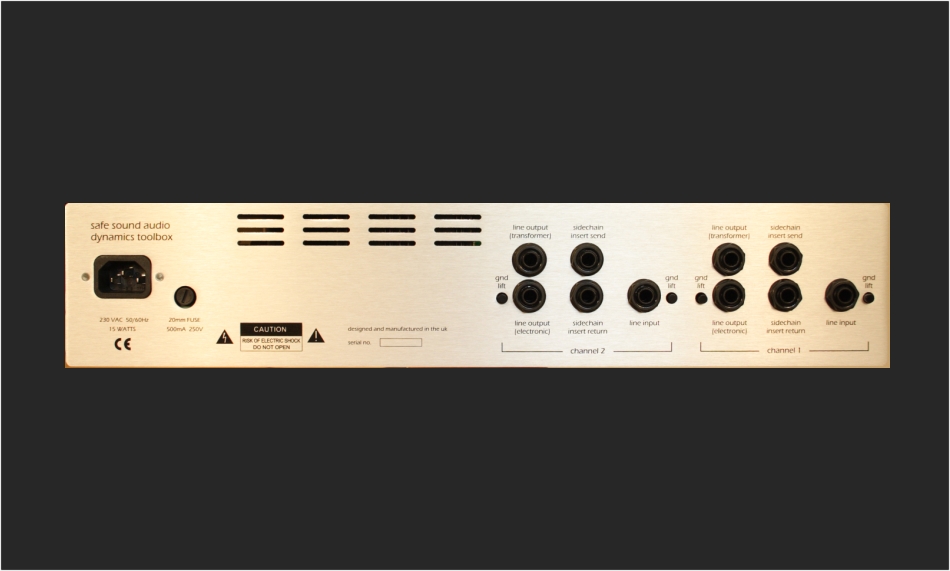
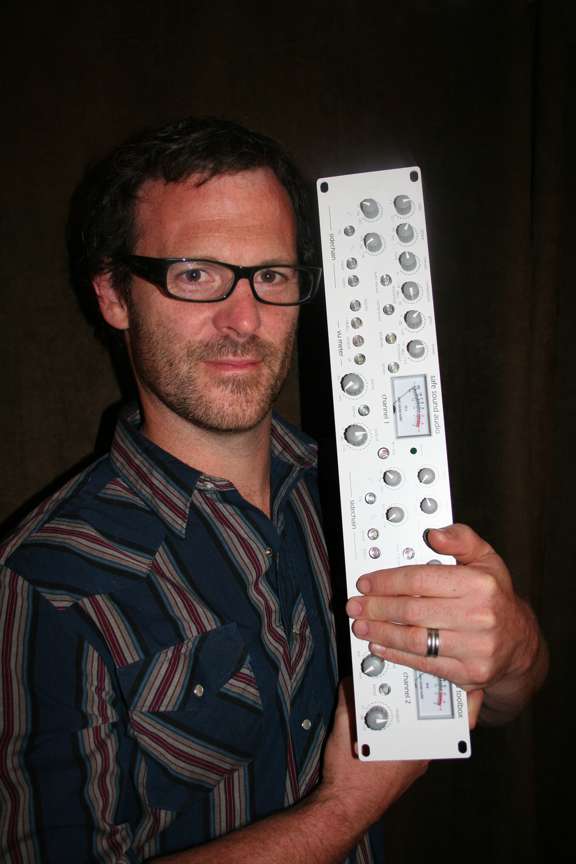
Paul Atkins reviews the Dynamics Toolbox
Paul is an engineer, producer, composer and musician and these days spends a large portion of his working life mixing FOH sound either on tour or in-house at London venues - including the legendary 100 Club. Recently he's been touring the UK and Europe with Eli Paperboy Reed & the True Loves, Various Cruelties and Blonde Louis.
His studio credits include Lucky Soul, The Hope Rebellion and Drunken Balordi and he plays drums for both Lucky Soul and Franc Cinelli and the Get Up & Go.
"I first became aware of Safe Sound Audio when I saw one of their magazine advertisements and was very excited by their product features - it felt like they had designed devices especially for me!
I was particularly turned on by the Dynamics Toolbox with its blend control and peak ride compression. On paper it looked to be a very versatile unit that would effortlessly get the sounds I enjoy and I was lucky enough to put one through its paces on a recent UK tour with Eli Paperboy Reed & the True Loves. The tour took in festival and clubs, analogue and digital consoles and both expensive and not so expensive PA systems.
Blend Control
I use parallel compression a lot when mixing live sound, in fact it's my default setting when using analogue consoles. Rather than sending all channels to the main output I'll assign them to two pair of sub groups and compress one pair of groups, carefully balancing the output so that the uncompressed pair peak at least 3dB louder than the compressed pair, and then sending both groups to the main outputs. Using this technique gives me more headroom in the console, which means I don't have to run the channel faders up as high, and the average volume of the main output is louder. This is particularly useful on systems that struggle to keep up with a band's onstage volume.
Until using the Dynamics Toolbox I hadn't successfully implemented this technique when using an analogue compressor with a digital desk because of the timing issue that occurs when taking audio out of the desk, through a piece of outboard and back into the digital domain. The unpleasant effect that occurs when summing the pair of groups is best described as 'phasey'.
This problem is quickly and easily overcome by using the blend control on the Dynamics Toolbox. For the first two shows of the tour, which were on digital consoles, I inserted it in 'link' mode over a stereo group to which all the channels had been assigned. Setting the blend control at 12 o'clock gave a 50/50 blend of dry and wet signal and after a quick tweak of the compression settings during sound check I was very happy indeed.
Peakride
I'm a big fan of compressors that can be hit hard with a signal yet be very discrete and transparent, especially on vocals. I've used other units that have similar cascading type compression in the studio, but never live, and was keen to try the Dynamics Toolbox on the lead vocal - even though it meant forgoing its use for my much loved parallel compression.
I was instantly impressed at how cleanly it controlled the lead vocals when inserted in 'peakride' mode, even at high levels of gain reduction. I used fast attack and release times, infinity:1 compression ratio and up to 9dB of gain reduction with no noticeable artefacts.
One of the biggest challenges of mixing a band live can be making the lead vocals clear and full sounding without being too out front. Safe Sound Audio's peak ride compressor is without a doubt the best tool I've used to get the lead vocal sound I love. Because it's very discrete you can use more compression than with other units which lets the vocal sit in the mix and retain intelligibility yet not sound overworked. In a nut shell, it makes my job a lot easier and sounds clean and musical while it's doing it.
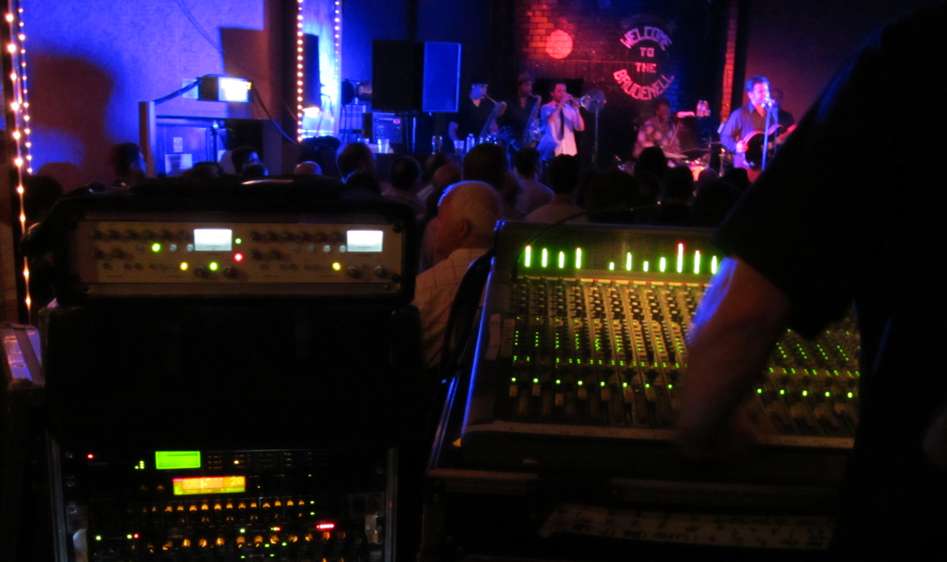

Summary
Being able to get great sounds quickly in a studio is an advantage for engineers, but it's essential in a live situation. The Dynamics Toolbox is well laid out, quick to set up, extremely versatile and is exactly what it says on the tin. But most importantly it sounds very, very musical.
It performed faultlessly as a stereo compressor, adding much needed oomph to smaller systems and it shined when inserted on the lead vocal.
After the first two gigs of the tour it had proved itself as a valuable tool and sending it back home was like bidding farewell to a holiday romance. Deep down, though, I know we'll meet again."
What happened next?
"I was so taken by the peakride compressor in the Dynamics Toolbox that I went straight out and bought a Safe Sound P1 half rack processor which has the same peakride compressor combined with a mic/instr/line input preamp. I used it for 4 gigs over the weekend - a small club gig and three main stage festivals. I'm using it on lead vocals and it works a treat."
Paul Atkins: www.paulatkinsmusic.co.uk
Eli Paperboy Reed www.elipaperboyreed.com
Tre Sheppard, front man of the band Onehundredhours reviews the Dynamics Toolbox
'I got started in recording right at the very beginning of my musical career... mostly because I couldn't afford studio time and I was always interested in how things were done. Because it was the '80's and I was young, the best I could do was the typical 4 track Portastudio thing, though I did graduate to a Tascam 8 track somewhere in that time! As I had very little experience, I was always trying stuff out and I got some great results and some terrible results from my experimentation. But I did fall in love with recording and the way that you could push things and work with gear, twisting knobs and listening, until stuff sounded great.
Years later, and much more recording, producing and performing under my belt... I still like to work with real outboard. I want knobs to turn and meters to push and edges to find that sound amazing... Like most guys, I work in Pro Tools now, and though it's a great tool, I struggle with the digital sound and harshness. Sure, you can work with it, especially if you have the time. I've got loads of great plugins, but still nothing compares, in my opinion to really great analogue outboard. So over the past few years, I've developed a sort of hybrid approach with great pre amps/eq on the way in to Pro Tools and a console with some choice outboard on the way out during mix.
I'd heard of the Safe Sound Audio Dynamics Toolbox from a few guys who's ears I trust, so I was keen to try it out, especially for buss duties on mixes but I have to admit even I was concerned at the number of knobs to turn! Robert and the team sent me out a Dynamics Toolbox with the optional Lundahl Transformers and I immediately threw it on a mix I was working on. What I realised pretty quickly was that it sounded good everywhere! I loved it on the drum buss, I loved it on the guitar buss, and I absolutely loved it on the main mix buss.
The standard electronic outputs sound great, but after I plugged in the Lundahls, I haven't really gone back as they sound so amazing. The DT has the ability to just make things suddenly sound better... that's a very subjective thing of course, but I really love what happens when I put stuff though it. The wonderful amount of knobs proved to be quite easy to get around as I worked with it, but I'm still finding new possibilities on each mix as I work with the unit.
My favourite things are the parallel comp feature and the built in sidechain EQ. I've always loved parallel comping, but as I only work with 8 busses now on a mixdown, I sometimes didn't have what I needed. The DT makes this absolutely simple and it just sounds great... I'm amazed that more stereo comps don't offer this feature as it really gives you the best of both worlds in a mixing environment. The built in sidechain is also very easy to use and quite intuitive, so you can easily tailor the response of the compressor to programme material and create the sound you're looking for. It really helps with a punchy kick that's ducking the whole mix when it hits! Just dial that frequency in and you're away.. punchy kick and a "glued" track.... you have to love that!
The DT can really be transparent, but you can push it right into that super squishy thing too... there's just so many great sounds in that box. Some of my compressors do one thing really well and I love that, but the DT really hits a lot of bases and doesn't compromise while doing so. And that's a rare thing. It's an ideal compressor for someone looking to add some lovely analogue to their two buss mix, but it also works brilliantly in a tracking scenario, either on stereo or mono sources. So if you've only got the budget for one outboard compressor, the Safe Sound Dynamics Toolbox is very, very hard to beat.
Bottom line, I love this box. Robert and his team are brilliant and their approach to their products is that wonderful blend of great technology with lovely musicality. I'm keen to hear the other varieties of transformers on the outputs as well... You could easily create two great stereo comp sounds with a couple of the DT's in a mix environment with different output transformers I expect!
On a final note, Robert had guaranteed my purchase... I hadn't heard the DT and I was a little leery about parting with my cash, so he offered me a refund if I wasn't completely happy.... I'd just need to send the box back. Just to confirm now Robert, that ain't happening! In fact, we really need to talk transformers very soon'
Tre has kindly shared some audio clips from one of their tracks 'Can't See Myself' which have been processed using the Dynamics Toolbox. You can hear;
- Original Drums submix unprocessed
- Fully Compressed Drums submix
- Blended Drums submix
- And the final mixed track - Can't See Myself
All audio clips © Tre Sheppard and Onehundredhours.
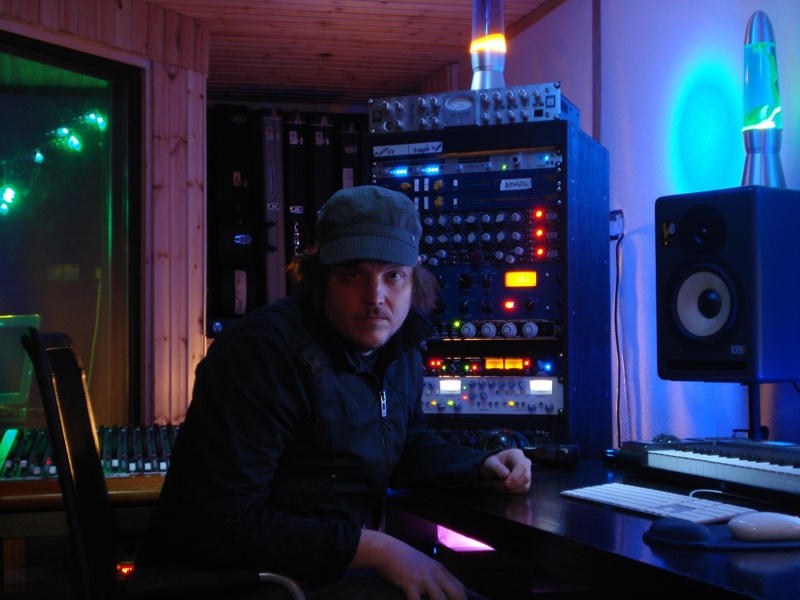

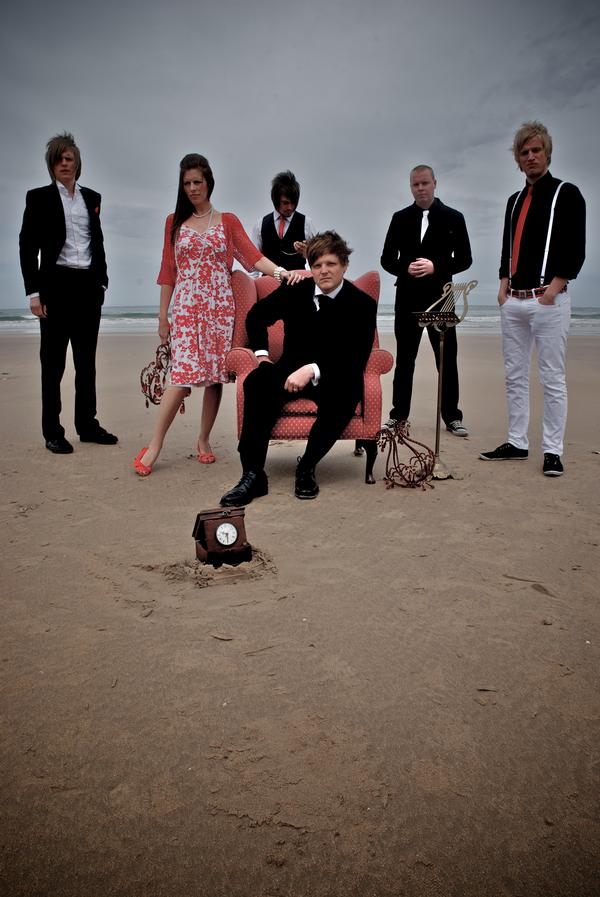
Tre Sheppard is the front man of the rock 'n' roll adventure that is Onehundredhours. Onehundredhours are well known in the UK and beyond for their u nique brand of "faith, hope and rock n roll." Their latest album, 'As Sure As The Stars', named as one of the 20 best albums of the year by CrossRhythms, is available now on iTunes. As a songwriter and producer,
Tre works out of 'zero hour,' his studio based on the north coast of Northern Ireland working particularly in artist development and production. He's signed to Survivor Records and EMI Publishing. You can check out his band at www.myspace.com/onehundredhours
TV and Film music composer Alasdair Reid gives his views on the Toolbox.
"Up until a year ago I was working - like the majority of media composers - solely in the box. But the search for some 2 bus 'glue' led me quickly out of the computer and in the direction of the Toolbox. It's clean and beautifully transparent sound was what first hooked me, the offer of 'what you hear going in is what you hear coming back' being a very attractive one. But it was the addition of the side chain filters and control over parallel compression that sealed the deal as far as I was concerned.
Transparent equals 'sterile' in some folks minds, but that's one thing this box could never be accused of - if anything, it's the master of 'invisible' compression, perfectly capable of knocking up to (in some cases) 6dB off a full mix without any audible side effects at all. However, I've found it's more than capable of nuking a drum mix for larger than life results, when required. Parallel compression is, for many people, reserved exclusively for drums, but it's shockingly effective on classical music too - the enormous dynamic range in some pieces can be hell on wheels to make usable for a track destined for broadcast - but the level of control offered by the Toolbox's Blend knob helps to make a tough job a whole lot easier.
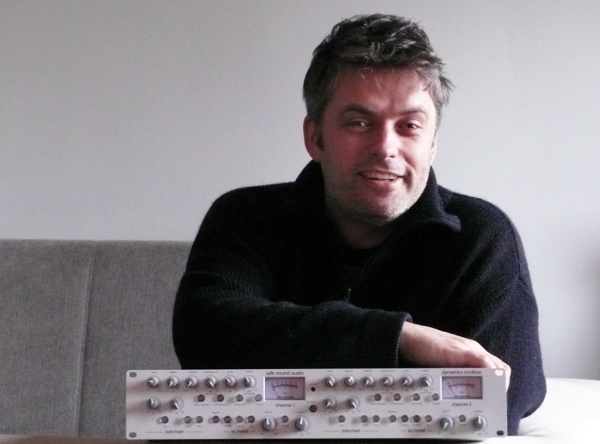
I'm convinced that for a lot of composers like myself who operate mainly in a hybrid environment (putting 90% of the music together in a DAW with just 2 or 3 bits of outboard to breathe life into the binary code) the Toolbox is a very attractive proposition - it covers a huge number of bases, isn't priced into the stratosphere and (most importantly) gives results that I've yet to hear any plug-in reproduce."
Sample work from Alasdair
HeliWar 'Nam
Alasdair Reid writes music for TV and Film - in 2006 he won the VW Score Prize at the Berlin Film Festival and 3 of the shorts he's composed for have been BAFTA nominated. Recent work includes the series 'WW2: Behind Closed Doors' (BBC), 'Survival' (BBC) and 'Big, Bigger, Biggest' (Five) and ads for IWC, Volkswagen and Deutsche Welle. Check out Alasdair's website at www.alasdairreid.com
Christopher B. Thomas reviews the Dynamics Toolbox
"The Dynamic Toolbox is one of the most versatile boxes in my arsenal, and my go-to compressor for mixbuss duties due to its transparency and versatility. Two key features stand out on this box; the Hi/Low pass sidechain and the "blend" feature for parallel processing. The sweepable Hi/Low pass filters enable me to dial in the frequency range that I want focused on, and is way more powerful than the simple hi-pass switches found on other units. On a drum buss, for example, I can dial the midrange to be focused on, while letting the lows and highs of the kit breath a bit more; I prefer this to just slamming individual drums/mics on their own. On a stereo track of horns, I was able to focus on one of the sax that was dominating the others (trumpet, flute) and reign it in without destroying the balance of the performance, just by monitoring the sidechain and sweeping until it was focused on the sax. And on the mix buss, I'm able to consistently tighten the mix without having everything respond to the deep lows of a kick or bass.
The "blend" feature allows me to establish parallel processing without sacrificing mults, DAW outputs, or mixer inputs. In my hybrid setup this is an exceptionally valuable resource. Frankly, I'm impressed that more companies don't employ this feature on their compressors!

While tracking, I've had major success controlling my sources using the Peakride option. Working with less experienced vocalists can be a hair-pulling experience, especially if they don't know how to work a mic. The peakride option gives me colorless control, and allows me to track a more balanced performance. When monitored, it provides the vocalist with a steadier level, resulting in stronger performances.
Every engineer that has worked in my studio has commented on how much they enjoyed experimenting and using the Dynamic Toolbox. Safesound is clearly dedicated to making devices that service today's logistical engineering requirements without sacrificing audio quality, and I look forward to the Dynamic Toolbox mastering edition that I’ve heard rumors about!"
Christopher B. Thomas (not to be confused with the other Chris Thomas!) has been making records since 1997, and has been producing since 2002. Now based in Cambridge, MA, Chris mixes primarily at his personal studio and engineers in rooms all over town. Chris mixes everything from Rock to Hip-Hop, Dance to Orchestral, but mainly produces indie/hard rock and singer/songwriter material. He is currently working on the next Piebald Release (Sidehatch/Side One Dummy), The Underberry's debut LP (and movie soundtrack), and a new record with Kevin Rheulet. He recently wrapped up the new LP from Barnicle (Bamf!/Sidehatch), an EP 4" Stud (unsigned), and a charity CD called General Eclectic Vol. 4 (Sidehatch). He is currently in pre-production with three other acts slated for summer '09 releases.
Chris's studio consists of a mix of analogue and digital gear, where he mixes "out of the box," mainly because it is more fun. He also owns CT Research and Development, and is currently working on a new type of bone-conducting transducer, among other things.
Chris has kindly put together a short 'showreel' highlighting some of the music he has mixed using the Toolbox. Available here to download as an MP3.
Excerpts from the Sound On Sound Magazine Review of the Dynamics Toolbox, review by Paul White
"As an audio processor, the Dynamics Toolbox turns out to be extremely versatile and can certainly be used to lay on a considerable amount of gain reduction without obtrusive side-effects. In Dynamic [tracking] mode, the unit takes on the role of bus compressor very effectively, gently knitting together parts of the mix, but with the added advantage of the Blend control and side-chain EQ for 'bottom up' processing or indirect tonal tweaking. At modest settings this processor adds the required density without killing the high end or introducing audible pumping, but when I brought the threshold right down and turned the ratio right up, I was easily able to get it to kickback in a way that was musically very useful.
I also achieved some dramatic results when using the Dynamic mode to beef up a sampled drum kit, where getting the compressor to the edge of pumping added a lot of excitement and attitude to the sound. Similar benefits were audible on some bass-guitar tracks.


Peakride really is a powerful compression mode, and I found it particularly useful for evening out the level of vocals that were recorded with excessive performance dynamics. Used conventionally, this will often be enough to get around the problem, but for singers who have a habit of really dropping their level on some phrases, the Blend mode will also be useful, as you can leave the peak level more or less where they are and bring up the low-level material underneath.
Wrapping all this up, it seems that the Dynamics Toolbox is very aptly named: it's certainly flexible enough to meet most compression requirements, from tracking to buss compression to mastering, yet it is also as easy to use as any standard compressor. It can control dynamics in a subtle and transparent way, but it's able to stamp its sonic identity on a signal with the authority of an overweight yeti sporting lead diving-boots. In short, this is a truly professional compressor and well worth checking out."
Excerpts from the March/April 2008 TapeOp Magazine Review, review by Andy Hong.
"As with the P1, the Dynamics Toolbox's Peakride compression is unbelievably smooth on vocals. Even with slower attack times and high compression ratios, sibilance was never a problem as it is with lesser compressors - a tribute to Peakride's ability to track and compress a signal without distorting the waveform, and this contributes greatly to the unit's transparency. The compressed vocal never sounded pinched, nor was it flattened so much that the emotion (in the natural dynamics of the performance) became indiscernible. With Peakride's multiple sidechains, the release time and the compression ratio are automatically adjusted to follow the signal in a musical and organic way. With lesser compressors, too fast of a release time can distort vowels, and too slow of a release will overly clamp syllables that follow big vocal transients.
On vocals, I also found the limiter to be surprisingly usable for controlling sudden consonants (and some plosives) with very little scooping of the vocal (what you hear when a limiter recovers from a big hit). It was the first time that I was able to use an analog limiter on vocals in this manner successfully.
On drum submixes, in Dynamic Tracking mode, I could set attack and release times for a squashed, pumping sound, which I could then blend with the uncompressed signal to get a nice, driving beat. Or using auto-release, I had no problem getting a subtly-thickened drum submix with very little evidence of compression. For this kind of task, the sidechain EQ is crucial in preventing the kick drum from punching holes in the mix.


I have purchased a Dynamics Toolbox (with Lundahl transformers) for myself. I'm loving it for tracking and mixing, and it's definitely the most flexible compressor in my arsenal. This do-it-all compressor/limiter warrants a serious look, especially if you're a DAW user, not only because of its wide range of capability during all stages of recording, mixing, and even mastering, but also because its Blend feature is crucial for implementing parallel compression without an analog mixer (or two sets of converters) to circumvent latency issues."
Bob Katz shares his first impressions of the Dynamics Toolbox
Bob Katz is a world renowned recording and mastering engineer located in Florida USA, and founder of Digital Domain which provides mixing & mastering services for records produced around the globe. Bob's wife (and partner) Mary Kent provides full graphic design and replication services there as well. His book "Mastering Audio: The Art and the Science" is a must read for audio engineers, and he has written numerous articles for major trade magazines. His record credits are a testimony to his passion for mastering and improving the process at every step of the way. His patented processes are in use around the world in better mastering rooms.
Even though the Dynamics Toolbox wasn't designed primarily as a mastering compressor we were very interested in Bob's opinions about how the unit matched up to his very exacting standards;
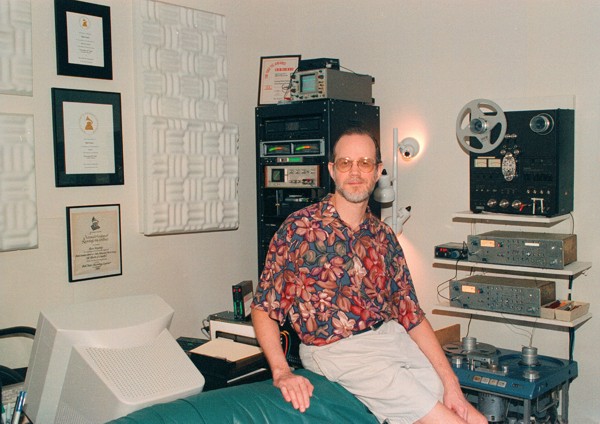
"So, here we go. Tomorrow I'm mastering a very high quality jazz ensemble that was recorded and mixed in a relatively purist manner, so that's what I put through the Dynamics Toolbox. Probably better to see whether it can pass the transparency test first.
First thing I did was patch it into a very transparent D/A/D chain with the latest Cranesong HEDD converters, source is at 96 kHz, then D/A, then A/D into my digital chain and monitor. After setting the output controls to unity gain, I found the sonics of the Dynamics Toolbox to be VERY transparent without compression, even with the Lundahl transformers. I felt that the electronic output sounds less clear, a hair less "transparent" than the Lundahls in this environment. Very subtly. This is puzzling, of course, since less is usually more, but perhaps you are driving the Lundahls from a different active stage and perhaps I hear the slight loss of transparency of the active driver stage. But it is extremely subtle and I had to match gains by ear very carefully. Let's see if others hear the same difference. So, let's say tentatively I prefer the transformer output, marginally.
I LOVE the blend control. On this nearly-audiophile production, I was able to get an extremely subtle effect, just the sort of "fattening without losing transients and impact" that I was looking for. But in addition, the continuous ratio that goes all the way down to 1:1 is an innovative feature, because even with the blend OFF (or fully wet) I was able to find a very low ratio setting (probably less than 1.5:1) which can be extremely subtle (desirable in mastering).
It was nice to arrive to a setting with this music, which was too dynamic a source, where the OUTPUT SOUNDS BETTER THAN THE INPUT! That's the sign of a good compressor. The Dynamics Toolbox sweetened and fattened the sound without adding any objectionable distortion of its own. It is possible to warm up the sound subtly and to arrive at a subtle result with ratio near unity and blend set to full wet or OFF.
The sidechain eq works VERY nicely and this is a BIG plus. I was able to use the high pass filter to keep the acoustic bass from driving the compressor too hard. I would not have been able to achieve the sound I wanted without the sidechain EQ.
Now I have to read the manual. (Oh, you passed the test that the box was operable without the manual. Though there are some features I have not figured out without the manual ("peak ride") but I'll check 'em out tonight from the book in bed, wife cooperating :-).
I got a chance to test the Safe Sound [Dynamics Toolbox] on a rock and roll mastering that I completed yesterday. Yes, it rocks!"